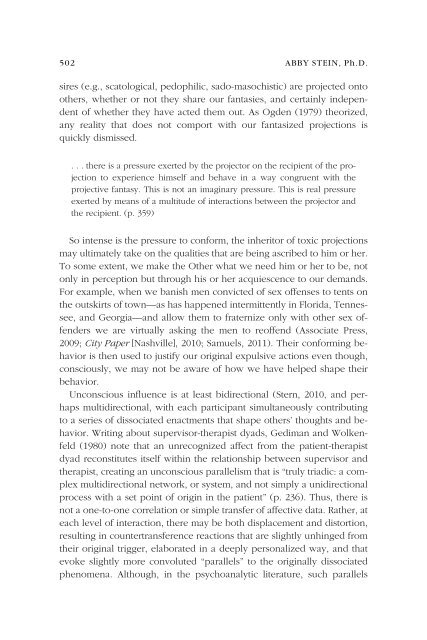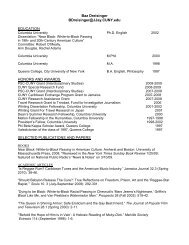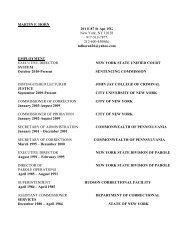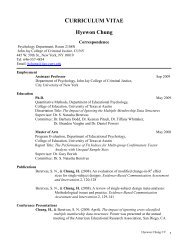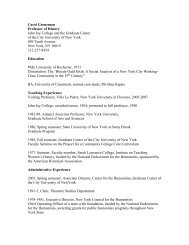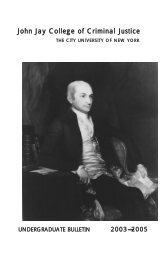The Sex MonSTer: - John Jay College Of Criminal Justice - CUNY
The Sex MonSTer: - John Jay College Of Criminal Justice - CUNY
The Sex MonSTer: - John Jay College Of Criminal Justice - CUNY
Create successful ePaper yourself
Turn your PDF publications into a flip-book with our unique Google optimized e-Paper software.
502 Abby stein, ph.d.<br />
sires (e.g., scatological, pedophilic, sado-masochistic) are projected onto<br />
others, whether or not they share our fantasies, and certainly independent<br />
of whether they have acted them out. As Ogden (1979) theorized,<br />
any reality that does not comport with our fantasized projections is<br />
quickly dismissed.<br />
. . . there is a pressure exerted by the projector on the recipient of the projection<br />
to experience himself and behave in a way congruent with the<br />
projective fantasy. This is not an imaginary pressure. This is real pressure<br />
exerted by means of a multitude of interactions between the projector and<br />
the recipient. (p. 359)<br />
So intense is the pressure to conform, the inheritor of toxic projections<br />
may ultimately take on the qualities that are being ascribed to him or her.<br />
To some extent, we make the Other what we need him or her to be, not<br />
only in perception but through his or her acquiescence to our demands.<br />
For example, when we banish men convicted of sex offenses to tents on<br />
the outskirts of town—as has happened intermittently in Florida, Tennessee,<br />
and Georgia—and allow them to fraternize only with other sex offenders<br />
we are virtually asking the men to reoffend (Associate Press,<br />
2009; City Paper [Nashville], 2010; Samuels, 2011). <strong>The</strong>ir conforming behavior<br />
is then used to justify our original expulsive actions even though,<br />
consciously, we may not be aware of how we have helped shape their<br />
behavior.<br />
Unconscious influence is at least bidirectional (Stern, 2010, and perhaps<br />
multidirectional, with each participant simultaneously contributing<br />
to a series of dissociated enactments that shape others’ thoughts and behavior.<br />
Writing about supervisor-therapist dyads, Gediman and Wolkenfeld<br />
(1980) note that an unrecognized affect from the patient-therapist<br />
dyad reconstitutes itself within the relationship between supervisor and<br />
therapist, creating an unconscious parallelism that is “truly triadic: a complex<br />
multidirectional network, or system, and not simply a unidirectional<br />
process with a set point of origin in the patient” (p. 236). Thus, there is<br />
not a one-to-one correlation or simple transfer of affective data. Rather, at<br />
each level of interaction, there may be both displacement and distortion,<br />
resulting in countertransference reactions that are slightly unhinged from<br />
their original trigger, elaborated in a deeply personalized way, and that<br />
evoke slightly more convoluted “parallels” to the originally dissociated<br />
phenomena. Although, in the psychoanalytic literature, such parallels<br />
04 CP47(4) 497-518.indd 502 10/6/2011 11:16:33 AM


